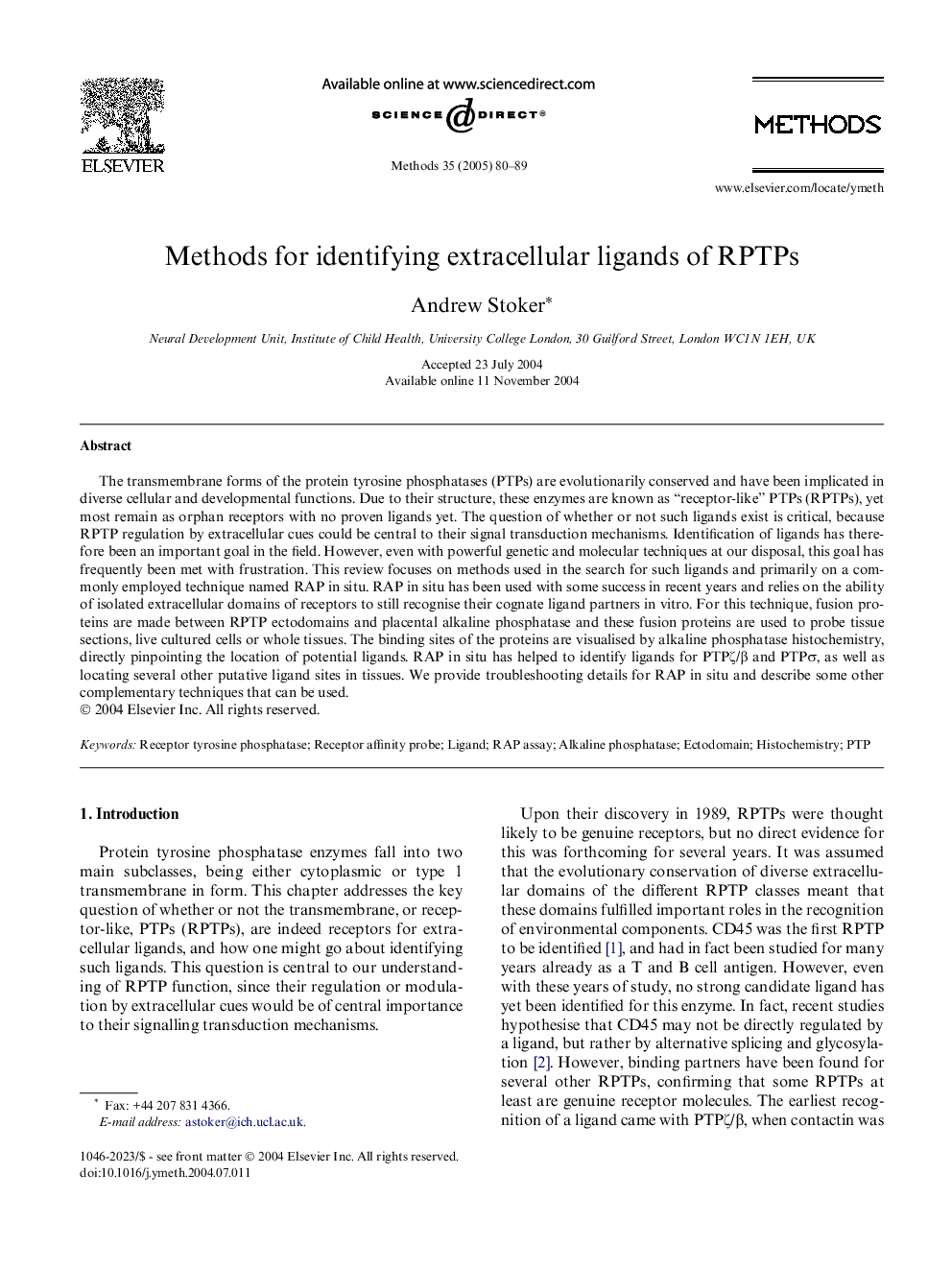| Article ID | Journal | Published Year | Pages | File Type |
|---|---|---|---|---|
| 10826756 | Methods | 2005 | 10 Pages |
Abstract
The transmembrane forms of the protein tyrosine phosphatases (PTPs) are evolutionarily conserved and have been implicated in diverse cellular and developmental functions. Due to their structure, these enzymes are known as “receptor-like” PTPs (RPTPs), yet most remain as orphan receptors with no proven ligands yet. The question of whether or not such ligands exist is critical, because RPTP regulation by extracellular cues could be central to their signal transduction mechanisms. Identification of ligands has therefore been an important goal in the field. However, even with powerful genetic and molecular techniques at our disposal, this goal has frequently been met with frustration. This review focuses on methods used in the search for such ligands and primarily on a commonly employed technique named RAP in situ. RAP in situ has been used with some success in recent years and relies on the ability of isolated extracellular domains of receptors to still recognise their cognate ligand partners in vitro. For this technique, fusion proteins are made between RPTP ectodomains and placental alkaline phosphatase and these fusion proteins are used to probe tissue sections, live cultured cells or whole tissues. The binding sites of the proteins are visualised by alkaline phosphatase histochemistry, directly pinpointing the location of potential ligands. RAP in situ has helped to identify ligands for PTPζ/β and PTPÏ, as well as locating several other putative ligand sites in tissues. We provide troubleshooting details for RAP in situ and describe some other complementary techniques that can be used.
Related Topics
Life Sciences
Biochemistry, Genetics and Molecular Biology
Biochemistry
Authors
Andrew Stoker,
